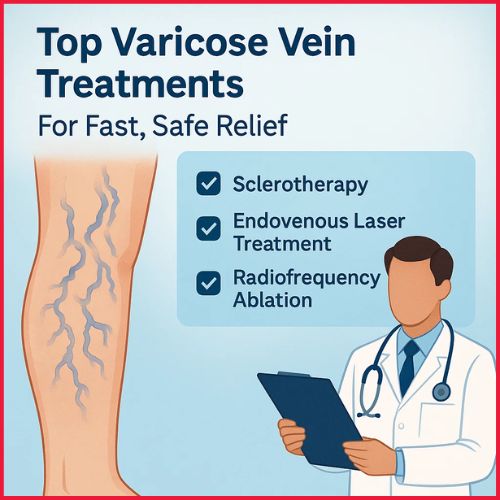IoT in Healthcare
What is IoT in Healthcare?
IoT investigates new components of patient consideration through ongoing wellbeing checking and admittance to patients’ wellbeing information. This information is a goldmine for healthcare partners to work on quiet wellbeing and encounters while creating income open doors and further developing healthcare activities.
As indicated by reports put together by P&S Market Research, there will be an accumulated yearly development rate (CAGR) of 37.6 percent in the healthcare Internet of Things (IoT) industry somewhere in the range of 2015 and 2020. On the off chance that one thing is sure, IoT has changed healthcare in an assortment of ways throughout recent years and will keep on doing as such long into the future.
Right now, patients speak with specialists during in-person visits, where they are analyzed and treated (typically having been tried ahead of time) or educated on additional techniques. This is powerful in instances of normal sickness like influenza or cold, however, does it fill in also for patients with persistent circumstances? Not really, as not in the least do patients with ongoing circumstances require normal consideration and observing, yet they likewise find it harder to organize impromptu specialist visits when required.
Applying IoT in healthcare could assist with reducing such difficulties and guarantee better persistent consideration, for instance, for people who experience the ill effects of ongoing sicknesses and need consistent checking and for people who live in provincial regions where admittance to clinical consideration is restricted. In this article, we’re investigating the capability of IoT in the healthcare business.
How does the Internet of things work?
Internet of Things alludes to an environment of associated processing gadgets or machines where each has its special identifier and can trade information gathered with different gadgets without human-to-human or human-to-PC communication.
Such organizations can comprise thousands of IoT gadgets that together make a tremendous biological system. Every industry can profit from IoT in various ways, including the healthcare business.
Our lives today are generally IoT-driven. We as of now have all the software and equipment expected to empower a huge number of gadgets to speak with one another immediately.
Strong processors, expanding memory, Bluetooth, WiFi, and 5G are now being utilized to send hearty and complex frameworks that continually move and break down information between one another. Each piece of information has a date and season of the issue and these properties take into consideration live or approach live sharing.
What are the advantages of IoT in Healthcare?
Reduced Errors – IoT allows for the accurate collection of data, automated workflows, and minimised waste, but most importantly it reduces the risk of error. Decreased costs – With IoT, patient monitoring can be done in real-time, drastically cutting down the need for doctors going out and making visits. IoT healthcare devices, wearable technology and data access allows physicians to monitor patients with greater precision and provide better-informed treatment. IoT security systems increase safety for patients, physicians and staff. UV light sanitation systems keep spaces clean and prevent illness.
List of Healthcare Monitoring Devices
1. Remote patient monitoring
Remote patient monitoring is the most widely recognized utilization of IoT gadgets for healthcare. IoT gadgets can naturally gather wellbeing measurements like pulse, circulatory strain, temperature, and more from patients who are not truly present in a healthcare office, killing the requirement for patients to make a trip to the suppliers, or for patients to gather it themselves.
Whenever an IoT gadget gathers patient information, it advances the information to a software application where healthcare professionals and additionally patients can see it. Calculations might be utilized to break down the information to suggest medicines or produce cautions. For instance, an IoT sensor that recognizes a patient’s bizarrely low pulse might produce an alarm so healthcare professionals can mediate.
A significant test with remote patient monitoring gadgets is guaranteeing that the exceptionally private information that these IoT gadgets gather is secure and private.
Glucose monitoring
For the over 30 million Americans with diabetes, glucose monitoring has customarily been troublesome. In addition to the fact that it is awkward to need to check glucose levels and physically record results, yet doing as such reports a patient’s glucose levels just at the specific time the test is given. On the off chance that levels vary generally, occasional testing may not be adequate to recognize an issue.
IoT gadgets can assist with tending to these difficulties by giving persistent, programmed monitoring of glucose levels in patients. Glucose monitoring gadgets take out the need to keep records physically, and they can alarm patients when glucose levels are dangerous.
Challenges incorporate planning an IoT gadget for glucose monitoring that:
a. Is sufficiently little to screen persistently without making an interruption patients
b. Doesn’t consume such an excess of power that it should be re-energized much of the time.
These are not unconquerable difficulties, notwithstanding, and gadgets that address them vow to change how patients handle glucose monitoring.
Heart-rate monitoring
Like glucose, monitoring pulses can be tested, in any event, for patients who are available in healthcare offices. Occasional pulse checks don’t make preparations for fast variances in pulses, and ordinary gadgets for ceaseless cardiovascular monitoring utilized in clinics expect patients to be connected to wired machines continually, debilitating their versatility.
Today, an assortment of little IoT gadgets are accessible for pulse monitoring, liberating patients to move around as they like while guaranteeing that their hearts are checked ceaselessly. Ensuring super precise outcomes remains an all-around challenge, however, most current gadgets can convey exactness paces of around 90% or better.
Hand hygiene monitoring
Generally, there hasn’t been a decent method for guaranteeing that suppliers and patients inside a healthcare office cleaned up appropriately to limit the gamble of spreading the virus.
Today, numerous clinics and other medical services tasks use IoT gadgets to remind individuals to disinfect their hands when they go into clinic rooms. The gadgets could give directions on how best to clean to alleviate a specific gamble for a specific patient.
A significant deficiency is that these gadgets can remind individuals to clean their hands; they can’t do it for them. In any case, research recommends that these gadgets can decrease contamination rates by over 60% in emergency clinics.
Depression and mood monitoring
Data about gloom indications and patients’ overall mindset is one more kind of information that has generally been hard to gather persistently. Healthcare suppliers could intermittently ask patients how they are feeling, however couldn’t expect abrupt emotional episodes. What’s more, often, patients don’t precisely report their sentiments.
“Disposition mindful” IoT gadgets can address these difficulties. By gathering and breaking down information, for example, pulse and circulatory strain, gadgets can construe data about a patient’s psychological state. Progressed IoT gadgets for temperament monitoring might follow information like the development of a patient’s eyes.
The critical test here is that measurements like these can’t anticipate wretchedness indications or different reasons for worry with complete precision. Be that as it may, neither can a customary in-person mental evaluation.
Parkinson’s disease monitoring
To treat Parkinson’s patients most actually, healthcare suppliers should have the option to survey how the seriousness of their side effects change as the day progressed.
IoT sensors vow to make this task a lot more straightforward by constantly gathering information about Parkinson’s side effects. Simultaneously, the gadgets allow patients to approach their lives in their own homes, rather than burning through broadened periods in a clinic for perception.
Why security matters for IoT in healthcare
To take full advantage of IoT for healthcare, basic security challenges should be tended to.
Most importantly, IoT gadget engineers, administrators and healthcare suppliers should guarantee that they have enough secure information gathered by IoT gadgets. A significant part of the information gathered by clinical gadgets qualifies as safeguarded wellbeing data under HIPAA and comparative guidelines. Subsequently, IoT gadgets could be utilized as entryways for taking delicate information while possibly not appropriately gotten. Without a doubt, 82 percent of healthcare associations report having encountered assaults against their IoT gadgets.
Creating secure IoT equipment and software is one stage intending to this test. Similarly significant, in any case, is guaranteeing that IoT gadgets in healthcare are overseen appropriately to shield against information from unmonitored gadgets falling into some unacceptable hands. A patient monitoring gadget that has a more seasoned variant of software or firmware, or a gadget that isn’t as expected decommissioned after it is not generally required, for instance, could offer aggressors a chance to invade an organization or take safeguarded wellbeing data.
Legitimate revelation and characterization of all IoT gadgets on a healthcare supplier’s organization help guard against this gamble. When IoT gadget networks are appropriately distinguished, grouped, controlled, and got, administrators can follow gadget conduct to recognize abnormalities, perform risk appraisals, and section powerless from strategic gadgets.














